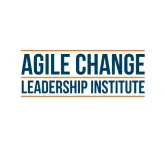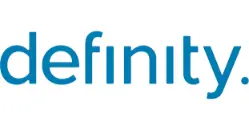Recently one of the peak change management bodies hosted a discussion* on the benefits of asynchronous, on demand learning (typically presented as micro-learning.
This is something we’re quite familiar with at the Agile Change Leadership Institute and thought it might be useful to share.
For us the primary benefit of asynchronous, on demand learning is Diversity, Equity and Inclusion. Let me explain:
- This type of training reflects the core principles of trauma-informed practice. So go slow and go small, provide autonomy. This type of learning provides control to the learner, allows them to pace as they need and not be overwhelmed.
- Similarly, we have been told that micro learning that is on demand allows for hyperfocus and limited attention and so is neuroinclusive and suits neurodiverse audiences.
- On demand, asynchronous learning addresses the gender tax – the change management profession is disproportionately female gendered. Women have been shown to take on the bulk of the work in the home (caring, schooling, housework) and so breaking professional development down into manageable chunks is more inclusive.
- There are also wins forcontractor / contingent workforce – in person training makes contractors and contingent workforce give up 1-3 day’s pay to access professional development. On-demand micro learning makes it easier to juggle professional development and billable hours.
- There are also benefits for those with carer responsibilities – it is difficult to attend 1–3-day training or in person training when you are also juggling carer duties.
- Finally, it appeals to differentiated learning styles – while the Visual, Auditory, Kinaesthetic learning preferences has been widely debunked, people learn in different ways. Some need to process information independently, think about the concepts before landing on the knowledge.
Not all Asynchronous learning is micro-learning.
It is important to recognise that not all asynchronous learning is micro-learning, and micro-learning is not just chopping up a full day course and delivering in smaller time capsules. There is a structure to micro-learning and its critical to be following the principles of andragogy.
When done well micro-learning has very strong benefits.

- Speed to knowledge: Learn what you need, when you need it, giving you ‘on demand’ knowledge to test and learn just-in-time.
- Improves completion: Research shows that likelihood of completion of microlearning programs is faster and higher than other training.
- Brain friendly: Short episodes ease cognitive load, improve focus and support retention.
- Anytime, anywhere: Digital channels mean we can learn from any location and when it suits us. Anytime learning enables us to learn just-in-time when we are more likely to apply the learning or experiment with a new practice.
- Aligned to our lifestyle: It’s how we consume information, via multiple channels, often through our portable devices.
- Learning is more self-directed: Our brains like choice and options – it enables autonomy which activates a reward response in the brain. In turn, this means the content is more likely to be retained.
- Supports peer to peer learning: Information is easier to share when consumed in short bites.
Caveat emptor.
The barrier to entry on asynchronous, on demand, micro-learning is incredibly low. Some of the things you need to check for are:
- Educational background of the providers – do they understand educational theory and how to structure a curriculum? Do they understand instructional design principles?
- Industry background – have they been in the shoes of the learner and can contextualise the content?
- Are they good at taking large complex bodies of knowledge and translating into shorter courses? This is a specialisation, and not everyone has that ability.
- Assessment – is there a genuine effort to assess learning – hint – 50% pass is not it!
- Outcomes – does the teaching lead to better practice, role attainment?
- How do they manage the opportunities for students to ask questions if they need?
Final thoughts…
On demand, asynchronous, micro learning is not a replacement activity for in person training.
It is an important supplement or an alternative for those who cannot afford the time out to do 1–3-day courses, and who do not have the attention span to devote to full day courses.
In our white paper Learning that Lands, we go through seven of the learning theories and there is a place for all. But ultimately, new ways of working need new ways of learning and on demand / asynchronous / micro-learning is here to stay!
Thanks to Jessica Crow for raising this very important conversation.


































